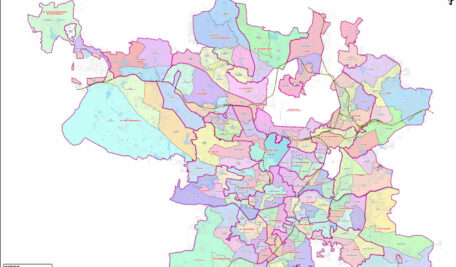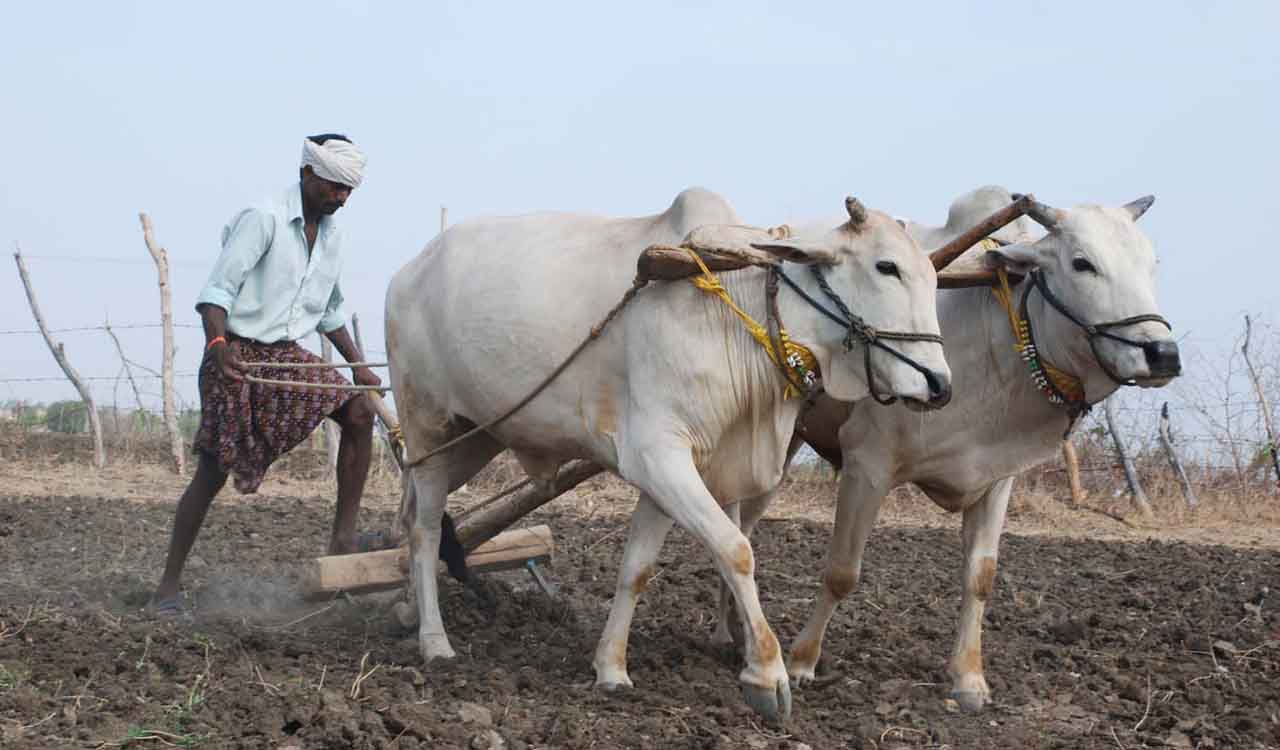Opinion: Decoding Telangana’s GST dip
Telangana’s September GST slump raises questions about the State’s fiscal resilience to natural and policy-driven shocks

By Dr Neeraj Kumar, Dr Maya K
In September 2025, Telangana recorded a 5 per cent decline in Goods and Services Tax (GST) collection compared to the same month the previous year. This dip stands out because, during the same period, India’s overall GST collection grew by nearly 7 per cent. Apart from Telangana, only a few States — Himachal Pradesh (-4 per cent), Delhi (-1 per cent), and Manipur (-1 per cent) — reported a fall in revenue.
However, the fall in Telangana’s GST revenue is significant not just as a statistical fluctuation but as an economic signal. According to the Comptroller and Auditor General (C&AG) report for the 2023-24 annual accounts, nearly 80 per cent of Telangana’s total revenue receipts come from its own tax sources, primarily GST, taxes on income and expenditure, property and capital transactions, and taxes on commodities and services. When such a tax base contracts, it poses serious fiscal implications for a State that depends heavily on its internal resource mobilisation to sustain development, infrastructure, and welfare programmes.
Tracking Trend
A closer look at the monthly trend reveals the slowdown more clearly. Telangana collected Rs 5,417 crore in July 2025, Rs 5,103 crore in August, and Rs 4,998 crore in September — indicating a continuous month-on-month decline. At the national level, India’s GST collections also dipped slightly during this period, but the contraction was far less steep than Telangana’s.
The comparison with last year makes the pattern even more interesting. In 2024, Telangana’s GST collections declined from Rs 4,940 crore in July to Rs 4,569 crore in August, before rising again to Rs 5,267 crore in September. In other words, while 2024 saw a rebound in September, the year 2025 recorded a sustained decline. Understanding why this reversal occurred requires examining both economic and administrative factors.
GST revenues grew 10% in October 2025, but upcoming Nov–Dec figures will reveal whether this momentum holds or if deeper structural issues are emerging
Risk Factors
One immediate explanation lies in the floods that struck several parts of Telangana in the months leading up to September 2025. Floods disrupt transport, supply chains, and local commerce, leading to lower consumption and reduced GST inflows. The State government itself cited floods as a contributing factor behind the revenue fall.
While such natural calamities are often temporary shocks, they expose a deeper structural issue. Although the State has invested heavily in irrigation infrastructure, agriculture remains vulnerable to weather volatility.
According to C&AG report for 2023-24, nearly 61 per cent of Telangana’s total capital expenditure went into major and minor irrigation projects aimed at improving farmers’ welfare. This focus on irrigation is commendable in the long run, but the concentration of capital expenditure in a single sector limits the scope for revenue diversification. When floods hit, agricultural distress not only affects rural incomes but also reduces the purchasing power that drives GST revenue by curbing the consumption of goods and services.
Another crucial factor behind the September slowdown may be the rationalisation of GST rates announced by the Government of India. The reform replaced the earlier four-slab structure (5 per cent, 12 per cent, 18 per cent, and 28 per cent) with a simplified three-tier system:
• 5 per cent for essential and priority items,
• 18 per cent for most goods and services, and
• 40 per cent as a “demerit rate” on luxury and sin goods.
These new rates took effect from 22 September 2025 under the “Next-Gen GST Reforms” initiative. The intention was to simplify the system and stimulate consumption by reducing compliance costs and uncertainty.
However, as seen in similar transitions elsewhere, businesses and consumers often delay purchases in anticipation of lower prices or revised invoicing. This behaviour likely contributed to a temporary decline in transactions in early September, just before the new rates became effective. The Telangana government has expressed concern that rationalisation could lead to an annual revenue loss of around Rs 7,000 crore, at least in the short term.
An SBI Research report offers a more optimistic projection, estimating that the State could actually see its GST revenue rise from Rs 42,075 crore in 2025-26 to Rs 50,779 crore after rationalisation — a potential net gain of Rs 8,705 crore. These remain projections for now, and the real impact will only become clearer when the coming months’ data is released.
Telangana’s fiscal structure is unusual among Indian States because of its high dependence on its own tax sources rather than central transfers. This self-reliance has advantages; it gives the State fiscal autonomy and encourages efficiency.
However, it also magnifies vulnerability when key revenue streams, such as GST, falter. The link between revenue and development expenditure in Telangana is particularly strong. A dip in GST not only constrains routine expenditure but can also slow down infrastructure and welfare projects. This may, in turn, weaken the very growth drivers that generate tax revenue, creating a vicious cycle of slowdown and fiscal stress.
The C&AG report again underscores this risk: while irrigation remains the single largest recipient of capital spending, sectors such as urban infrastructure, health, and industry promotion have seen relatively modest allocations. Diversifying capital expenditure across sectors that generate sustained economic activity, such as construction, manufacturing, logistics, and services, could strengthen the State’s tax base and provide a buffer against such shocks.
Crucial Months
The next few months will be crucial in determining whether the September decline is merely a temporary adjustment or an indication of deeper structural stress. The October 2025 GST collections provide some preliminary insight: revenues increased to Rs 5,726 crore in October 2025, as against Rs 5,211 crore in October 2024, a rise of about 10 per cent. However, the upcoming GST numbers for November and December will show whether October’s momentum continues and offer a clearer understanding of the underlying trend.
If the collections rebound, it will confirm that the September dip was largely a short-term response to floods and pre-reform uncertainty. But if the trend persists, policymakers may need to re-evaluate both the State’s expenditure priorities and its economic diversification strategy. Telangana’s experience also holds a broader lesson for States that rely heavily on their own tax efforts: revenue stability depends not only on taxation efficiency but also on the diversity and resilience of the underlying economy (jobs, goods and services, etc).
The decline in Telangana’s GST collection in September 2025 should not be viewed as an isolated statistical anomaly. It reflects a complex interplay of natural disruptions, policy transitions, and structural fiscal choices. While floods may have triggered a temporary shock, the larger challenge lies in achieving a balanced expenditure pattern that nurtures multiple engines of growth.
As Telangana positions itself as a progressive, revenue-efficient State, it must ensure that its development model remains resilient to both climatic and policy shocks. The key lies in strategic diversification — investing not only in irrigation but also in urban infrastructure, manufacturing, technology, and service sectors that can expand the tax base.

(The authors are Assistant Professors, Department of Economics, CHRIST [Deemed to be University], Bengaluru)
Related News
-
KCR extends Christmas greetings to people of Telangana
2 mins ago -
Watch: ISRO’s “Bahubali” places 6,000-kg US satellite into orbit
19 mins ago -
Kosgi: Revanth Reddy continues abusive rhetoric against KCR
35 mins ago -
South Central Railway announces special trains for Sankranti festival 2026
37 mins ago -
Yashoda Hospital team performs rare neurocytoma surgery on Siddipet patient
54 mins ago -
Retired employees stage fast, demand clearance of pending dues in Kothagudem
1 hour ago -
Man loses Rs 6 lakh in traffic fine scam via text message link
1 hour ago -
Cold wave hits Karimnagar crops, paddy seedlings stunted despite fertiliser use
1 hour ago




